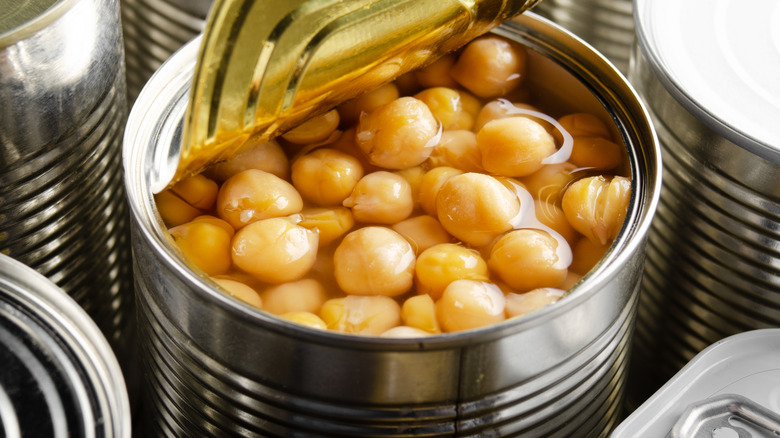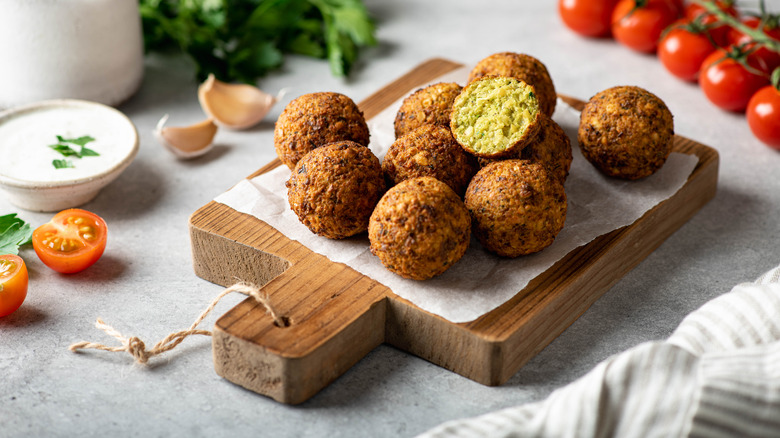What To Consider Before Using Canned Chickpeas For Falafel
Take a moment and imagine the best falafel you've ever had. Whether it comes from a food truck, a modern sit-down restaurant, or a local hole-in-the-wall, the texture differentiates good from not-so-good falafel. Lush and tender on the inside yet sturdy and crispy on the outside — a good ball of falafel holds all the onions, herbs, garlic, and spices together until the moment you bite into it. When you finally do, you'll be met with the juxtaposed textures of the crunchy outer layer and supple interior, with a distinguishable mouthfeel that highlights each and every element.
However, that type of experience isn't so easy to achieve. Traditional falafel recipes often call for dried chickpeas, which take hours of soaking before they're soft enough to grind and form into patties (via The Spruce Eats). It's time-consuming for a regular weeknight meal, and you could consider cutting down the preparation time by using a canned variety instead. But before you do, there are some things you should consider so as not to sacrifice that luscious texture.
Make sure your canned chickpeas are completely dry before mixing
According to The Mediterranean Dish, dried chickpeas instead of canned ones are preferred in traditional falafel recipes because they're believed to taste better and keep your falafel patties in one piece. But, if you don't have the time or patience to soak them, there are ways to achieve a similar result using canned chickpeas — you'll need to take extra consideration throughout the following steps in your recipe.
First and foremost, once you've strained and rinsed your canned chickpeas, they must be completely dry before you grind and mix them into your other ingredients. Additionally, once they are dry, ground, and ready to mix, you'll want to add some flour to help the ingredients bind together. This will hopefully help them hold shape during the frying process. However, America's Test Kitchen (ATK) advises against using uncooked all-purpose flour since it often results in a dry, bready texture.
Instead, opt for a cooked flour paste or water roux, a Japanese technique called tangzhong (per Oven Tales). The method will add moisture to the dough without making it too delicate to form into patties and fry (via America's Test Kitchen). Then, when your falafel is ready to cook, a low and slow process will help achieve a crispy exterior and fully cooked center — around 325 F is ideal.

